λ Gerard Dillon (Irish 1916-1971) Untitled Oil on canvas Signed (lower right); signed and inscribed (to stretcher verso) 153 x 92cm (60 x 36 in.) Provenance: Sale, Sotheby's London, 16 May 2003, lot 142 Dillon's interest in complete abstraction began whilst spending time in London during the 1950s. During this time Dillon was influenced by artists such as Rothko, de Kooning and Pollock exhibiting at the Tate. This transition into abstraction continued throughout his career playing with geometric patterns, reoccurring lines and elements of surrealism that began to influence his work. The simple shapes remind us of Dillon's work with cut-outs and experimentation with linocut printing techniques. The horse and figure are possible motifs harking back to Dillon's interest in the people of the West of Ireland. The colour palette is emotive and striking focusing our attention on the repetition of shape and pattern across the canvas. Gerard Dillon (1916-1971) Gerard Dillon who became better known as Gerry, was born in Belfast in 1916. Dillon left school at the age of 14 and started his career as an apprentice decorator with Maurice Sullivan and Sons. His interest in the arts, cinema and theatre shaped his social communities and ultimately led him to begin his career as an artist in the 1930s. At the age of 18, Dillon left Belfast to join his brother, Joe and sister, Madge who were living in London. At the outbreak of the Second World War in 1939, Dillon was on a cycling trip in Ireland. Due to travel restrictions he was left with no choice but to stay in Ireland. He decided to venture to Dublin and became part of an exciting artistic community which included iconic artists Louis le Brocquy and Patrick Hennessy He also formed companionships with artists from the White Stag Group including Basil Rakoczi and Kenneth Hall In 1942, Mainie Jellett who championed Dillon, opened his first solo show at The Country Shop which had been founded in Dublin in 1930. Mainie Jellett went on to set up the Irish Exhibition of Living Art (IELA) a year later which showcased abstract expressionism and avant-garde Irish art. The IELA became a major platform for contemporary Irish artists and Dillon exhibited annually alongside other Ulster boys such as Daniel O'Neill and George Campbell By the end of the 1940s the Ulster group dominated the IELA and Dillon was to serve as committee member for 20 years. It was through this series of exhibitions that Dillon came into contact with Colin Middleton Markey Robinson and Gladys McCabe, all artists featured in this private Irish collection. Middleton was seen as one of the more experimental artists and his surrealist style and bold colour palette did not go unnoticed and served as an influence for the Ulster Group. Gerard Dillon was a self-taught artist and he was constantly inspired by the West of Ireland which offered an alternative to the gritty city life of Belfast and London and paintings of the Irish landscape and its people filled his work during the 40s and 50s. He stated in 1951 'Think of the West and the life lived there. Then think of my childhood and youth in the middle of industrial Belfast. Is not the West and the life lived there a great strange kind of wonder to the visitor from the redbrick city?' In the late 1950s Dillon moved away from landscape painting and moved into complete abstraction. He was surrounded by the abstract expressionist movement exposed to works by Rothko, De Kooning, Pollock, Tapies and Jorn all exhibiting at the Tate in London. This new movement marked a freedom, away from the expectations of Ireland and Belfast. It is possible that Richard Hamilton whilst staying with Dillon in London in 1950s influenced Dillon who turned to cutting up his linocuts and working with collage, found objects, repetition of colour and pattern for larger scale composition pieces. However, the late 1960s signified a shift in Dillon's work. The impact of losing his three brothers between 1962-66
λ Gerard Dillon (Irish 1916-1971) Untitled Oil on canvas Signed (lower right); signed and inscribed (to stretcher verso) 153 x 92cm (60 x 36 in.) Provenance: Sale, Sotheby's London, 16 May 2003, lot 142 Dillon's interest in complete abstraction began whilst spending time in London during the 1950s. During this time Dillon was influenced by artists such as Rothko, de Kooning and Pollock exhibiting at the Tate. This transition into abstraction continued throughout his career playing with geometric patterns, reoccurring lines and elements of surrealism that began to influence his work. The simple shapes remind us of Dillon's work with cut-outs and experimentation with linocut printing techniques. The horse and figure are possible motifs harking back to Dillon's interest in the people of the West of Ireland. The colour palette is emotive and striking focusing our attention on the repetition of shape and pattern across the canvas. Gerard Dillon (1916-1971) Gerard Dillon who became better known as Gerry, was born in Belfast in 1916. Dillon left school at the age of 14 and started his career as an apprentice decorator with Maurice Sullivan and Sons. His interest in the arts, cinema and theatre shaped his social communities and ultimately led him to begin his career as an artist in the 1930s. At the age of 18, Dillon left Belfast to join his brother, Joe and sister, Madge who were living in London. At the outbreak of the Second World War in 1939, Dillon was on a cycling trip in Ireland. Due to travel restrictions he was left with no choice but to stay in Ireland. He decided to venture to Dublin and became part of an exciting artistic community which included iconic artists Louis le Brocquy and Patrick Hennessy He also formed companionships with artists from the White Stag Group including Basil Rakoczi and Kenneth Hall In 1942, Mainie Jellett who championed Dillon, opened his first solo show at The Country Shop which had been founded in Dublin in 1930. Mainie Jellett went on to set up the Irish Exhibition of Living Art (IELA) a year later which showcased abstract expressionism and avant-garde Irish art. The IELA became a major platform for contemporary Irish artists and Dillon exhibited annually alongside other Ulster boys such as Daniel O'Neill and George Campbell By the end of the 1940s the Ulster group dominated the IELA and Dillon was to serve as committee member for 20 years. It was through this series of exhibitions that Dillon came into contact with Colin Middleton Markey Robinson and Gladys McCabe, all artists featured in this private Irish collection. Middleton was seen as one of the more experimental artists and his surrealist style and bold colour palette did not go unnoticed and served as an influence for the Ulster Group. Gerard Dillon was a self-taught artist and he was constantly inspired by the West of Ireland which offered an alternative to the gritty city life of Belfast and London and paintings of the Irish landscape and its people filled his work during the 40s and 50s. He stated in 1951 'Think of the West and the life lived there. Then think of my childhood and youth in the middle of industrial Belfast. Is not the West and the life lived there a great strange kind of wonder to the visitor from the redbrick city?' In the late 1950s Dillon moved away from landscape painting and moved into complete abstraction. He was surrounded by the abstract expressionist movement exposed to works by Rothko, De Kooning, Pollock, Tapies and Jorn all exhibiting at the Tate in London. This new movement marked a freedom, away from the expectations of Ireland and Belfast. It is possible that Richard Hamilton whilst staying with Dillon in London in 1950s influenced Dillon who turned to cutting up his linocuts and working with collage, found objects, repetition of colour and pattern for larger scale composition pieces. However, the late 1960s signified a shift in Dillon's work. The impact of losing his three brothers between 1962-66
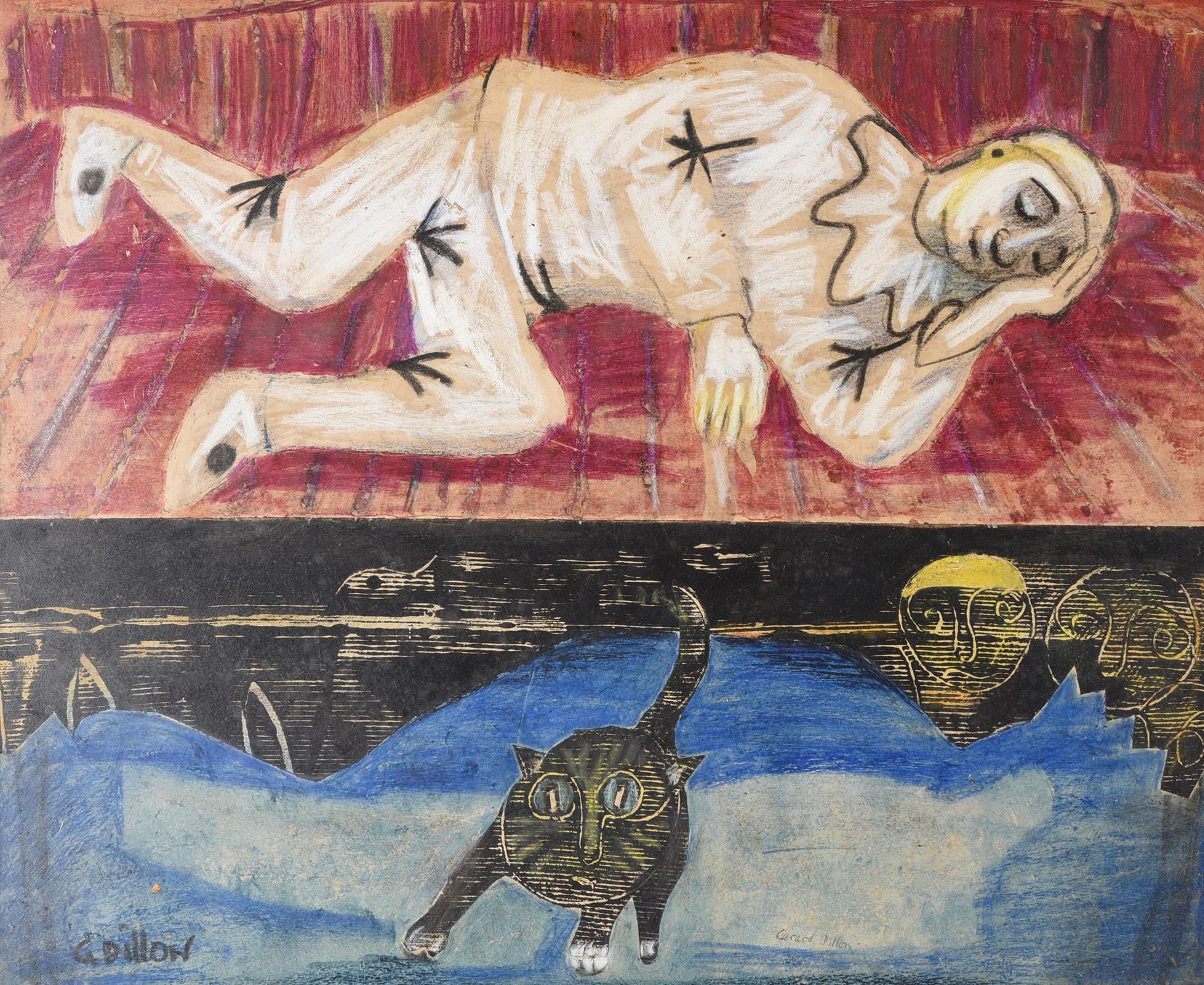
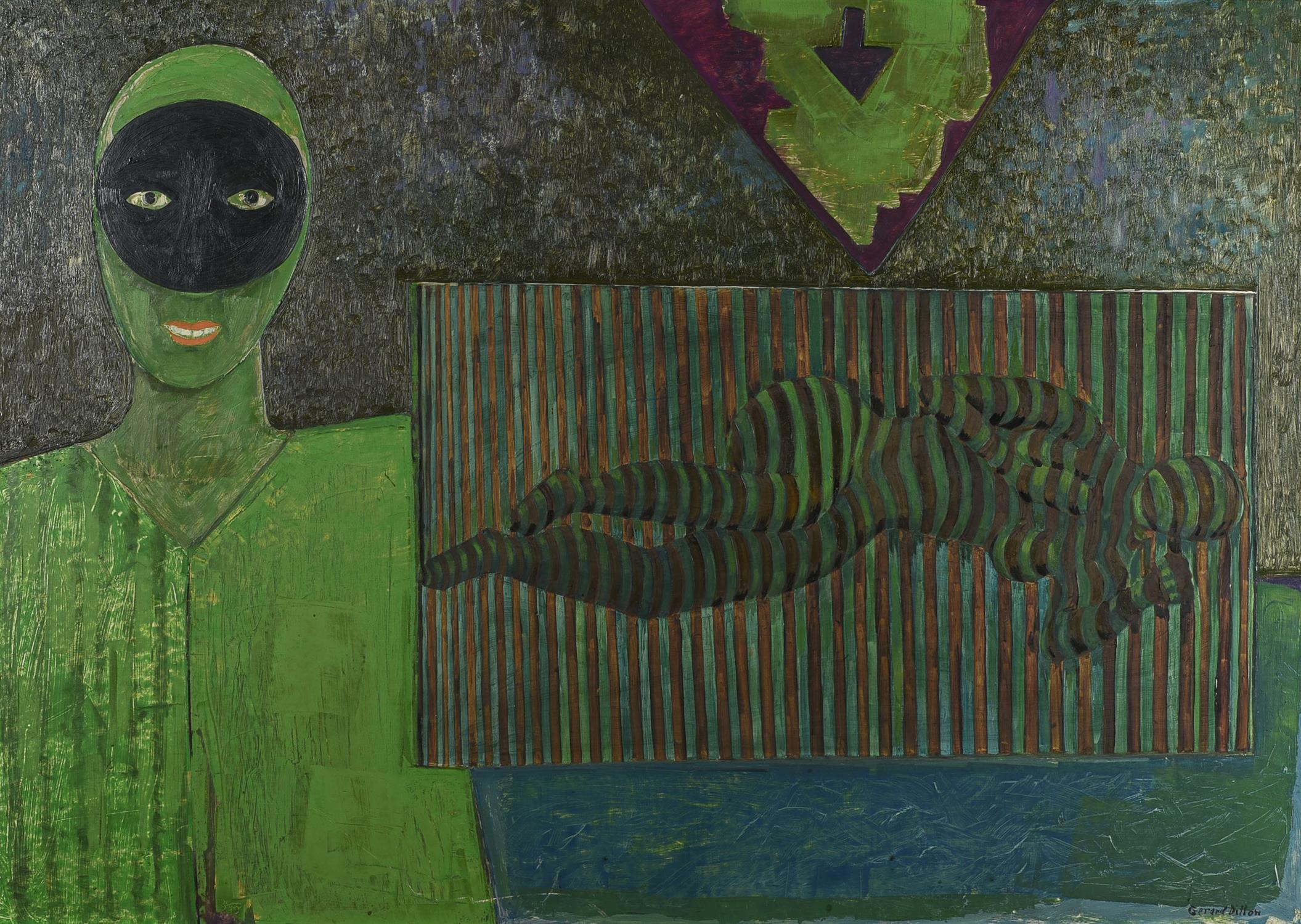
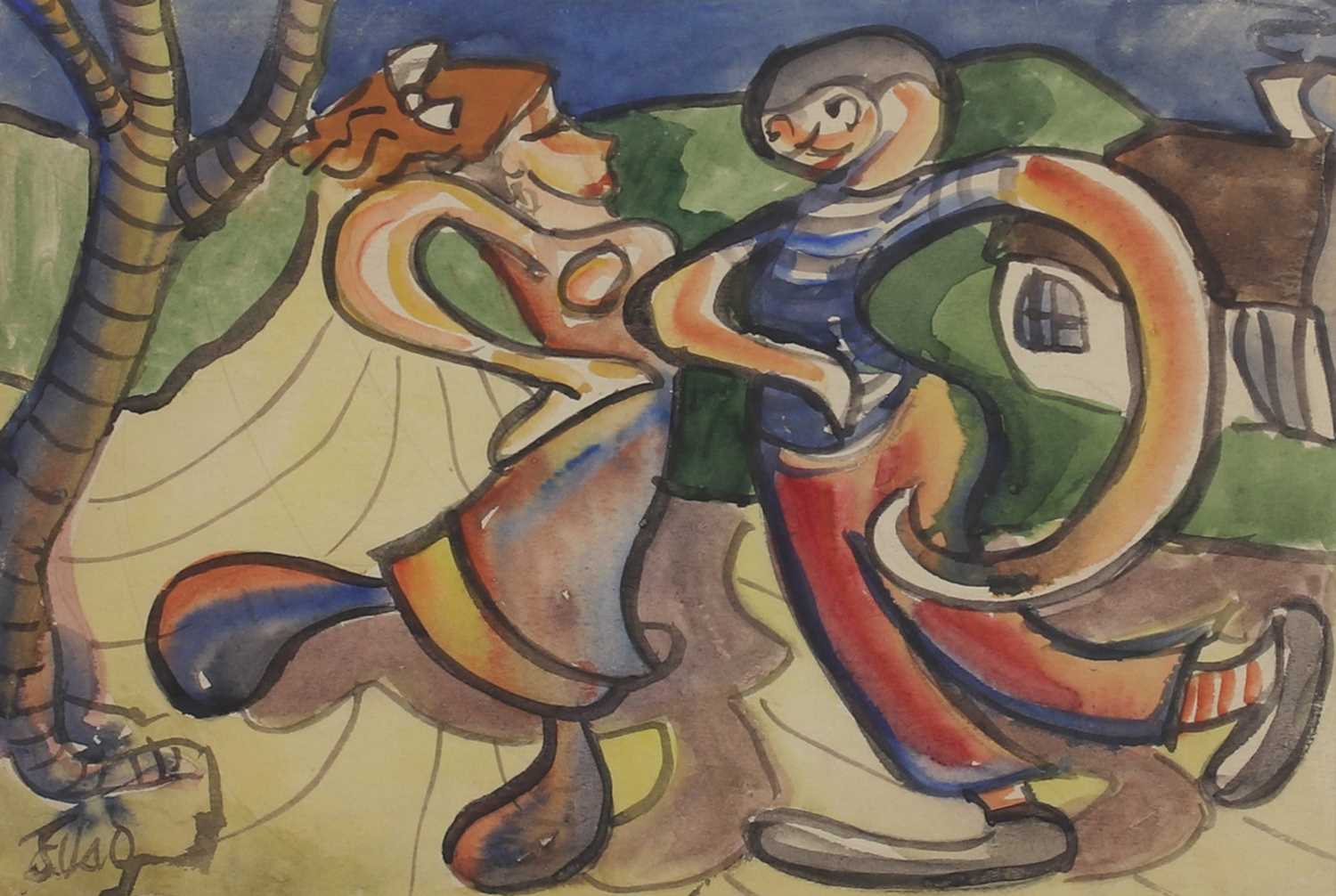

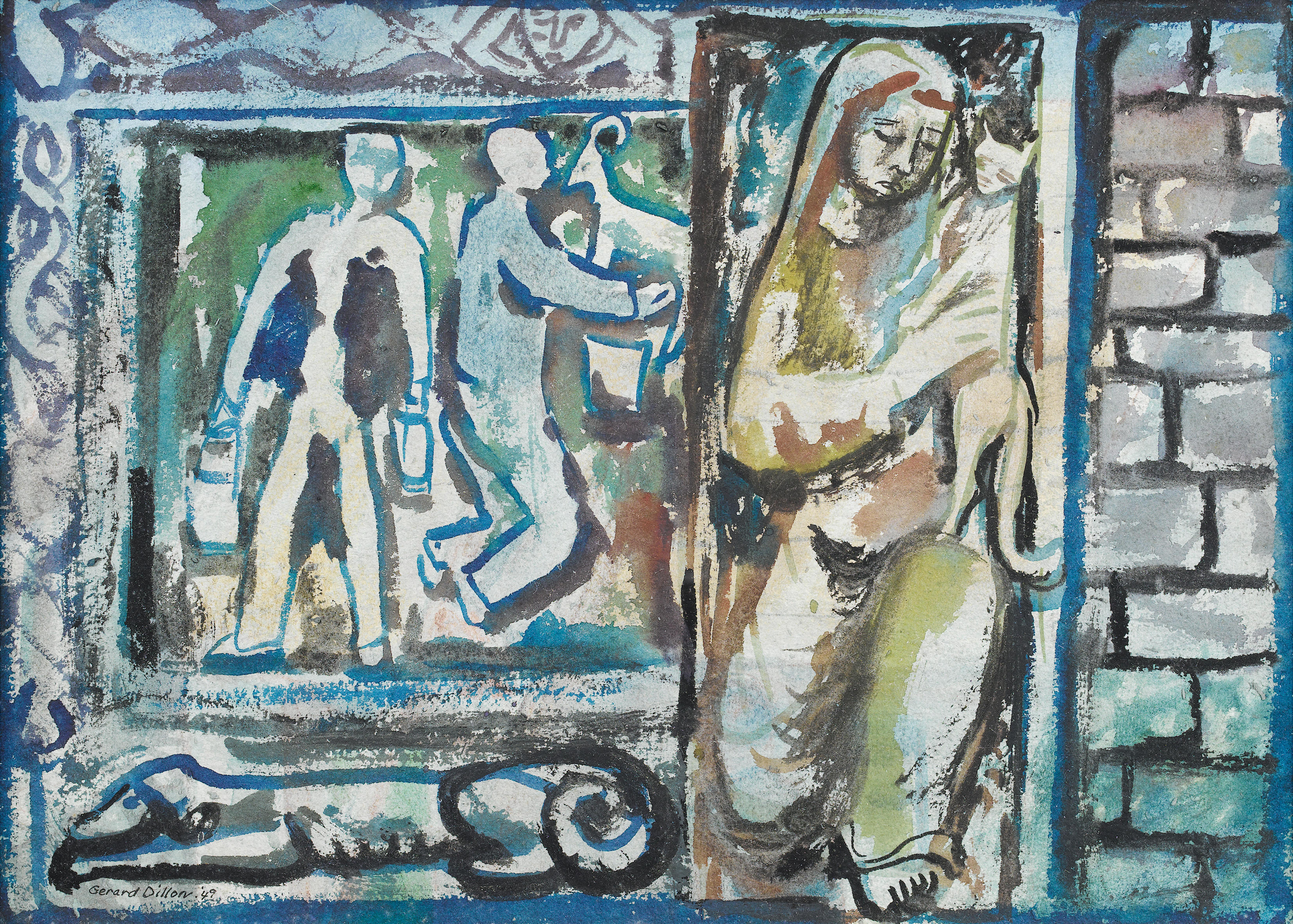
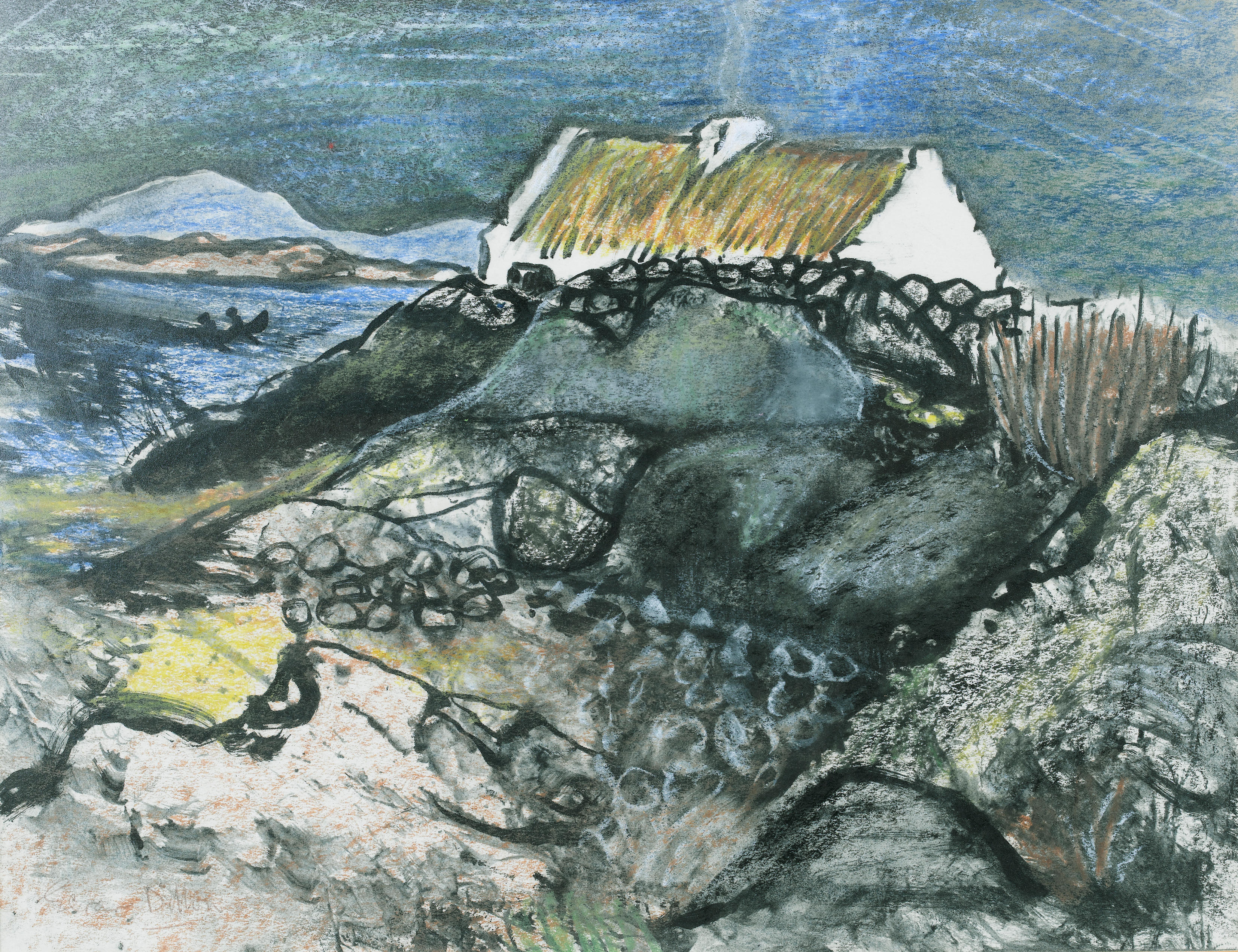


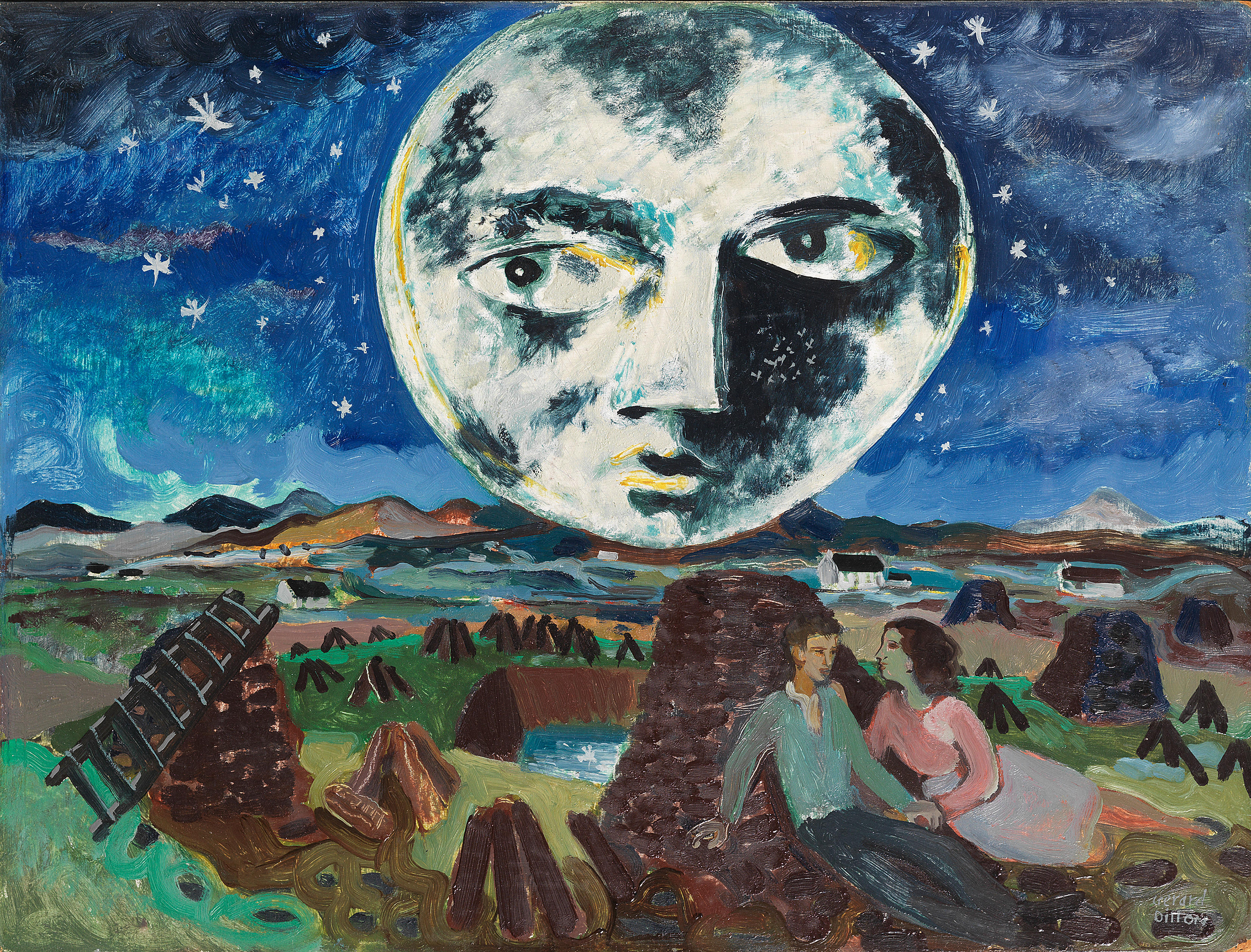
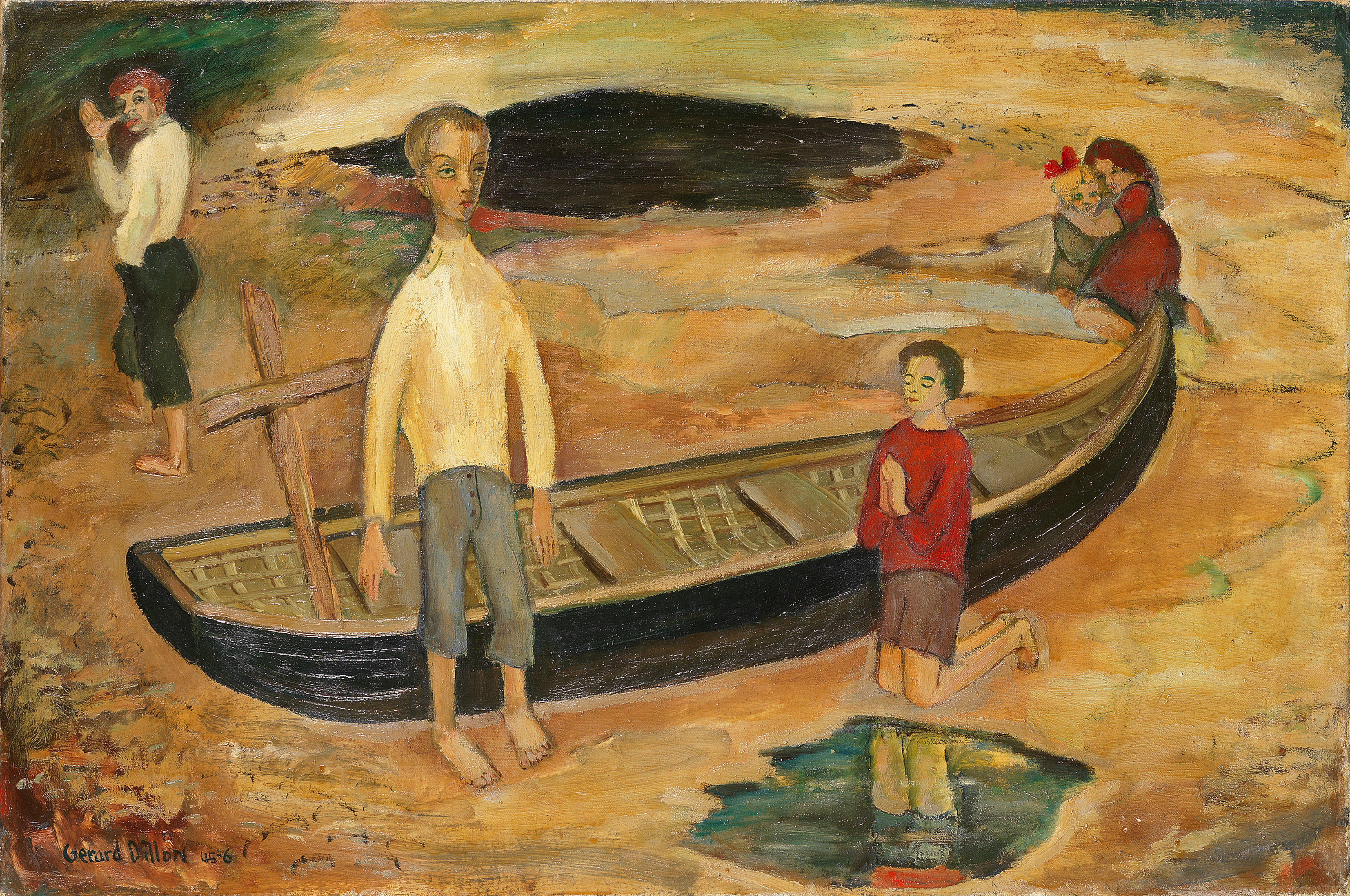
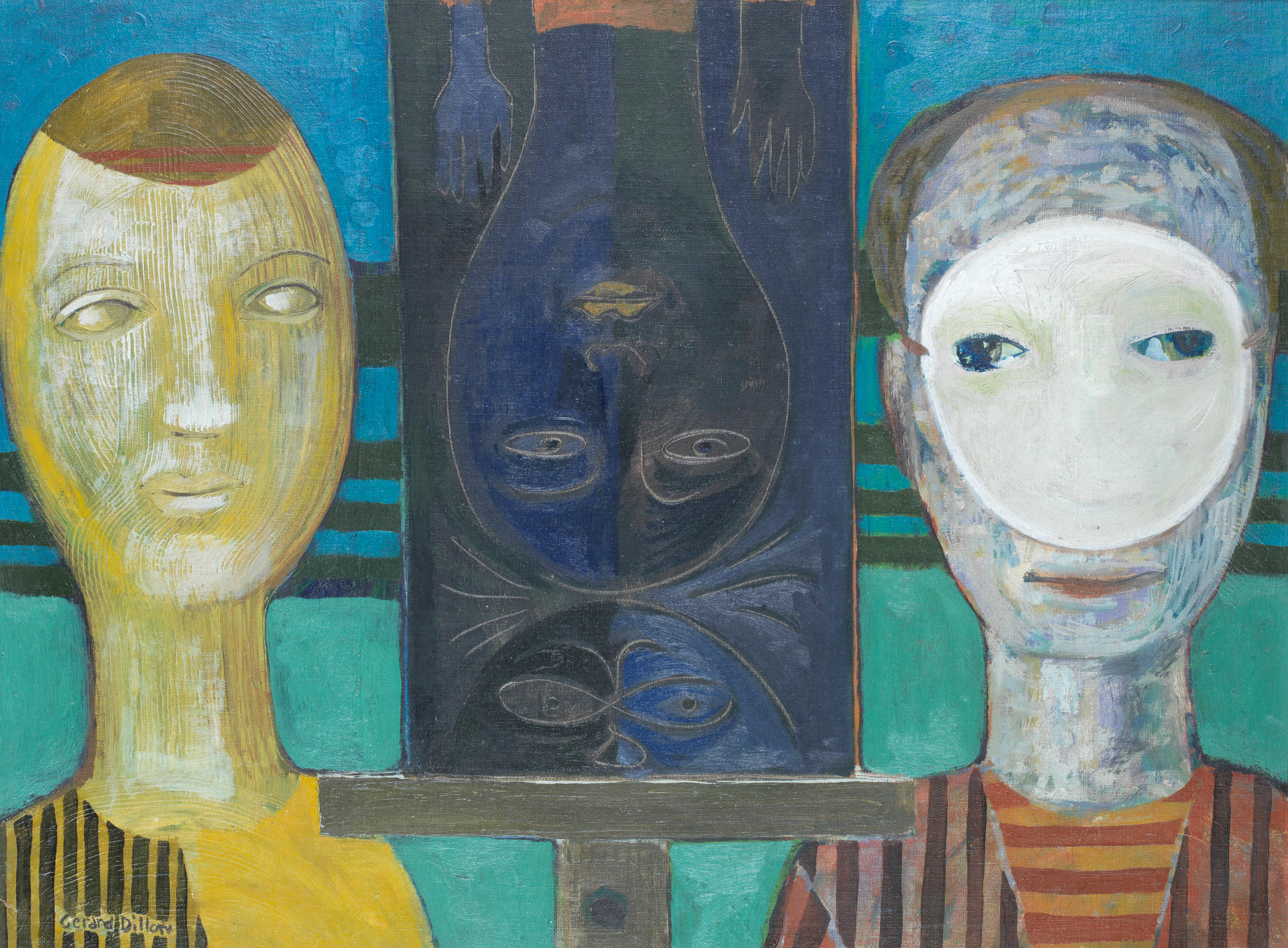

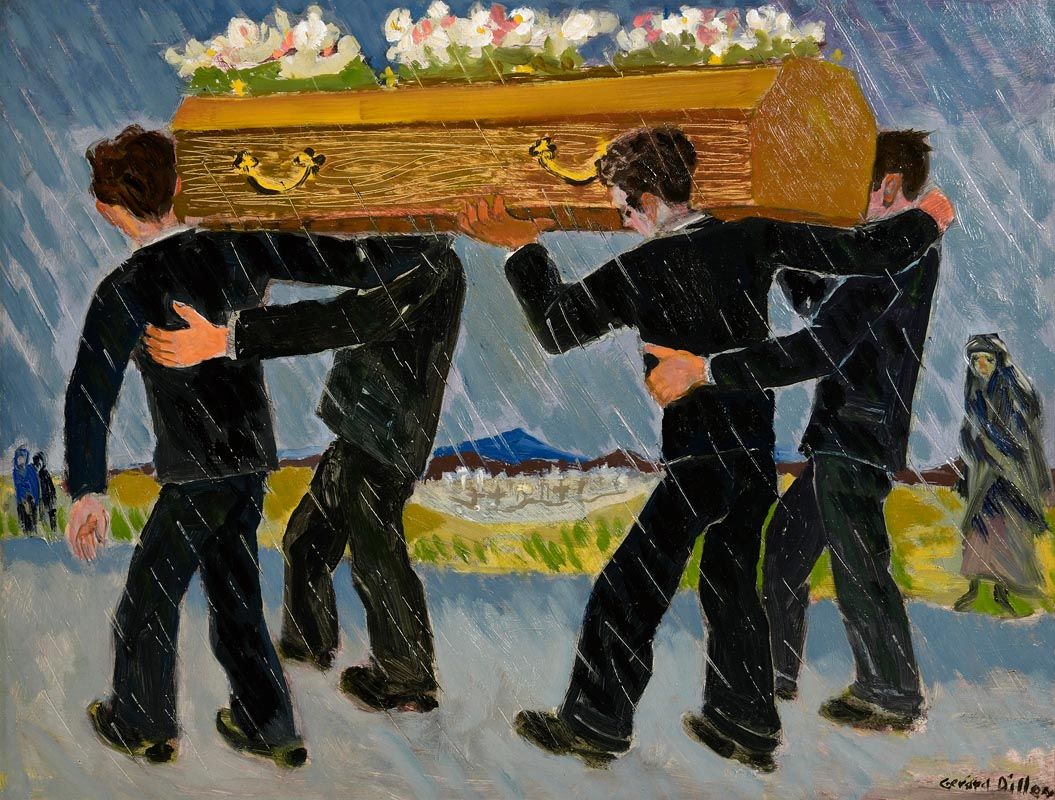
Try LotSearch and its premium features for 7 days - without any costs!
Be notified automatically about new items in upcoming auctions.
Create an alert